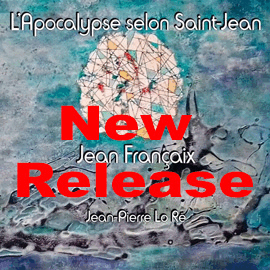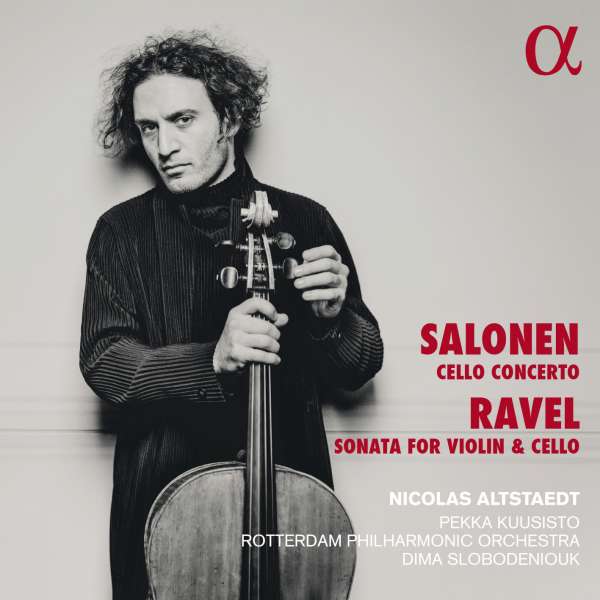Salonen selber hat für den ersten Satz seines Cellokonzerts zwei Metaphern geäußert. Die erste, ‘Chaos to line“ spielt darauf an, dass sich aus einer Unübersichtlichkeit, vielleicht sogar nur Staub, eine Idee oder sogar das Bewusstsein entwickelt. Die zweite handelt von einem Kometen. Das Cello ist der Komet, das Orchester sein Schweif, der um den Körper herum ein eigenes, aber eben auch verbundenes Dasein einnimmt. Daraus komponiert Salonen ein klassisch dreisätziges Solokonzert. Im zweiten Satz, der mit seiner komplexen Textur sich ungreifbar gibt, erklingt im Mittelteil ein spielerisches Duett zwischen dem Solocello und der Altflöte. Im dritten Satz führt ein anfänglich selbstvergessenes Cello-Solo schnell zu extrovertiert rhythmischem Geschehen, das oft wild kinetische Energie ausströmt, bis es in einer Cellolinie stratosphärisch hoch verlischt. Die Wirkung dieses Schlusses ist sehr eindringlich. Über alle Sätze sieht man den Kometen kommen, erfreut sich während seines Weges durchs Blickfeld daran, dann entschwindet er auf seiner kosmischen Reise.
Salonen hat wieder einmal ein packendes Werk geschaffen. Seine Kompositionen sind nicht atonal, also in gewisser Weise nicht modern oder, anders gesagt, auch leicht bekömmlich. Und er scheut sich auch nicht, wunderschön klingende Passagen einzuarbeiten. Aber der Komponist gibt seinen Werken auch Tiefe und Inhalt und spielt nicht nur mit plakativer Oberfläche. Die große Orchesterbesetzung lässt dem Solisten trotzdem genug Freiraum, im All mangelt es daran ja nicht. So ist dieses Stück zugleich sphärisch enthoben und auch erdgebunden nahbar.
Der Cellist Nicolas Altstaedt ist ein Cellist, der mit allen Wassern gewaschen ist. Auch hier weiß er das kosmische Spiel mit technischer Nonchalance einzufangen und dem Trabanten die Kanten und Scharten zu geben, die ihn definieren. Doch auch die lyrischen Passagen bedient er mit behänder Leichtigkeit und sanglicher Frische.
Die Duosonate für Geige und Cello von Ravel scheint zunächst nicht zwingend dazu zu passen. Aber mit der durchaus, neudeutsch formuliert spacigen Spielweise von Pekka Kuusisto ergibt sich ein formidables Duo. Kuusisto und Altstaedt machen aus dem Duo von Ravel ebenso einen Spielplatz wie eine kryptisch unbändige Szene, die man sonst allenfalls etwa in dieser Besonderheit und Intensität bei Patricia Kopatchinskaja erwarten dürfte. Das mag den einen oder anderen erschrecken, das ist nicht schulbuchmäßig. Aber hätten wir das gewollt? Es ist ungemein faszinierend.
Dima Slobodeniouk lässt das Philharmonische Orchester aus Rotterdam, das sich zurzeit oft mit sehr hörenswertem Agieren vernehmen lässt, in allen orchestralen Farben agieren. Zu dem gelungenen Gesamteindruck trägt die Aufnahmetechnik nicht unwesentlich bei.
Salonen himself has uttered two metaphors for the first movement of his Cello Concerto. The first, ‘Chaos to line,’ alludes to the fact that an idea or even consciousness develops from a clutter, perhaps even just dust. The second is about a comet. The cello is the comet, the orchestra its tail, which takes on its own, but also connected, existence around the body. From this, Salonen composes a classical three-movement solo concerto. In the second movement, which is intangible with its complex texture, a playful duet between the solo cello and the alto flute is heard in the middle section. In the third movement, an initial self-effacing cello solo quickly leads to extroverted rhythmic activity, often pouring out wildly kinetic energy until it dies away stratospherically high in a cello line. The effect of this ending is very haunting. Throughout the movements, one sees the comet coming, rejoices as it passes through one’s field of vision, then disappears on its cosmic journey.
Salonen has once again created a gripping work. His compositions are not atonal, so in a way they are not modern or in other words easily digestible. And he is not afraid to include beautiful sounding passages. But the composer also gives his works depth and content and does not just play with striking surface. The large orchestration nevertheless leaves enough freedom for the soloist, as there is no lack of it in space. Thus this piece is at the same time spherically removed and also earthbound approachable.
Cellist Nicolas Altstaedt is a cellist who knows all the tricks of the trade. Here, too, he knows how to capture the cosmic playing with technical nonchalance, giving the satellite the edges and nicks that define it. But he also serves the lyrical passages with nimble ease and lyrical freshness.
The duo sonata for violin and cello by Ravel does not seem to fit this program at first. But with Pekka Kuusisto’s quite spacy way of playing, it results in a formidable duo. Kuusisto and Altstaedt turn Ravel’s duet into a playground as well as a cryptically unruly scene that one might otherwise expect at best in this particularity and intensity with Patricia Kopatchinskaja. That may startle one or the other; it’s not textual. But would we have wanted that? It is immensely fascinating.
Dima Slobodeniouk lets the Philharmonic Orchestra from Rotterdam, which at present often lets itself be heard with very audible performances, act in all orchestral colors. The recording technique contributes not insignificantly to the successful overall impression.




















